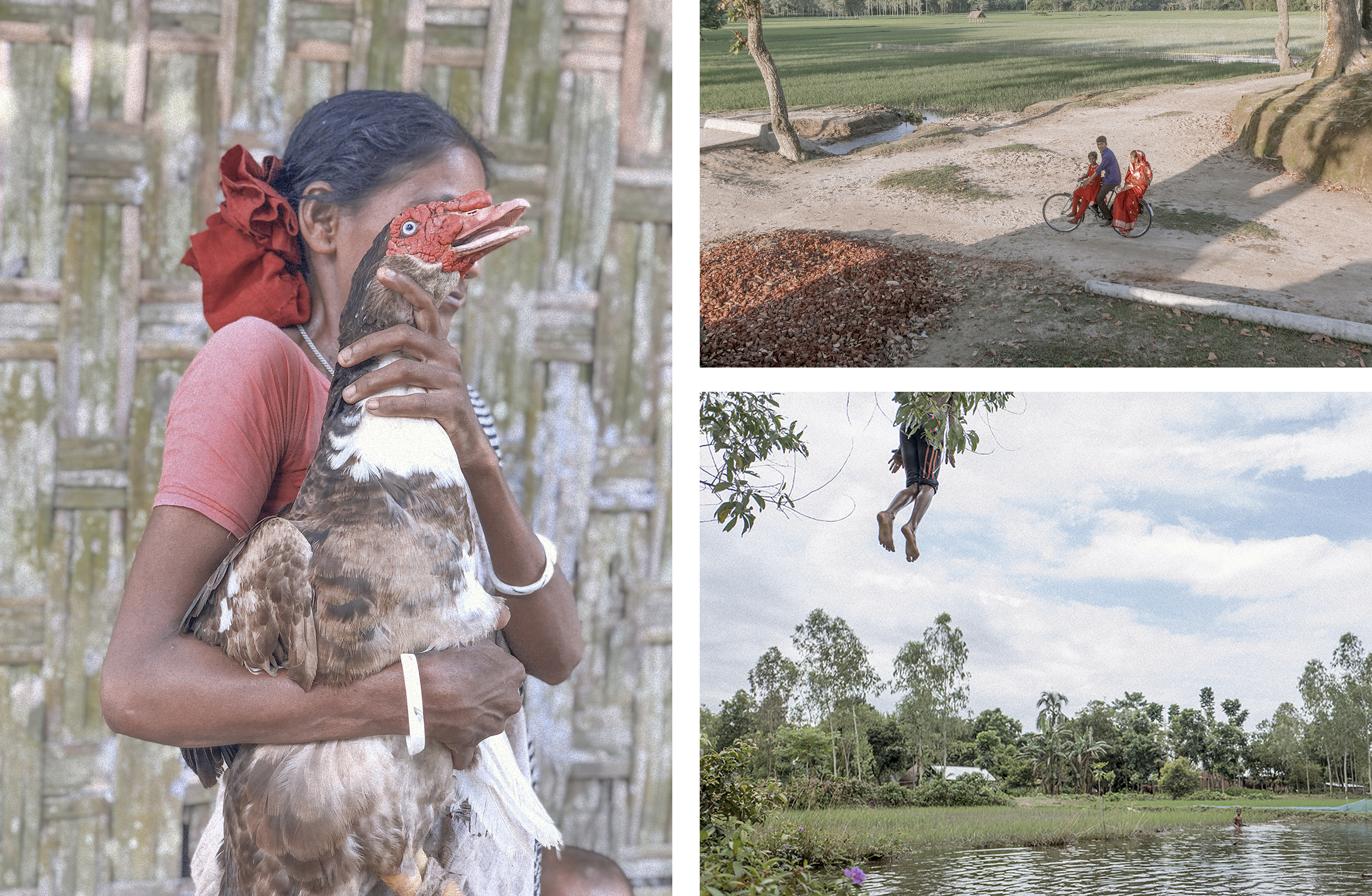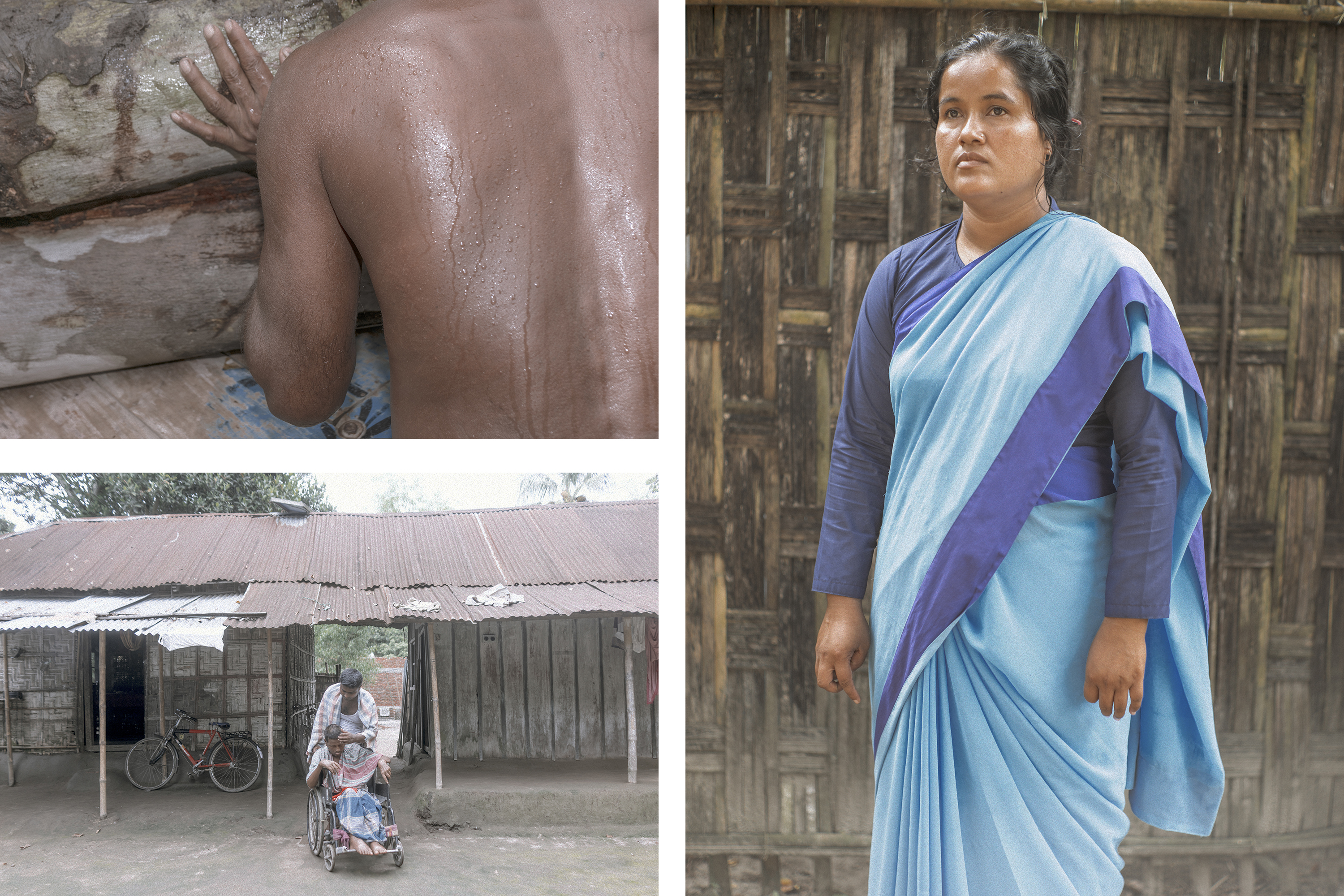Fenced off from neighboring potato and tobacco fields, Mekhliganj resettlement camp seemed an anomaly in modern-day India, a mini-throwback to the massive refugee crisis that had greeted the country’s founding in 1947.
Just inside the perimeter of the camp, a mustachioed police officer in a leather jacket and blue beret approached me and inquired about my purpose. I was there with permission from the district magistrate of Cooch Behar to interview the former residents of the chhitmahals, I told him, and he asked me to wait while he stepped into his office to make a call to the subdivision office to check this out.
The temperature was still in the fifties, but the morning sun had succeeded in burning off the fog that had accompanied my Bengali translator, Aparna Roy, and me on our two-hour journey from the city of Jalpaiguri. Aparna, like the officer, was dressed for winter, in a black jacket, jeans, and sunglasses. While we waited for the officer to return, we observed a group of teenaged boys playing carrom, a game like air hockey, on a homemade table. A sari-clad woman tended to a small field of sticks of rolled cow dung, used as cooking fuel, bundling the ones that had baked in the sun and stacking them by a bamboo bench. A chicken, followed by four chicks, pecked nearby. If not for the corrugated metal barracks, we might have been witnessing village life almost anywhere in India, Bangladesh, or Pakistan, much as it had carried on for centuries.
But life for the 48 families in the resettlement camp was anything but typical. Six weeks earlier, in November of 2015, the 48 families sheltered here had moved from a contingent existence in Bangladesh, where their ancestors and they had been marooned as Indian citizens for generations. In August of that year, India and Bangladesh, which share the fifth-longest international border in the world, had swapped 111 Indian districts located within Bangladesh for 51 Bangladeshi districts located inside of India.
These incongruous plots of land within the borders of another nation’s territory, known geographically as exclaves (or enclaves) and locally as chhitmahals, had been home to approximately 53,000 people, according to a 2011 Indian census—38,000 Indians in the exclaves of Bangladesh and 15,000 Bangladeshis in the exclaves in India. (An easy, if overly simplistic, explanation is that enclave is to exclave as immigrant is to emigrant: The chhitmahals of India and Bangladesh were both enclave and exclave, in the same way that an immigrant to one country is also an emigrant from another. But also: An exclave is a bit of a country split from its motherland by one or more countries, such as Kaliningrad, Russia, which is separated from Russia by Poland and Lithuania, while an enclave is a territory wholly embedded within another. Only three “true” enclaved nations exist in the world: Lesotho, Vatican City, and San Marino.)
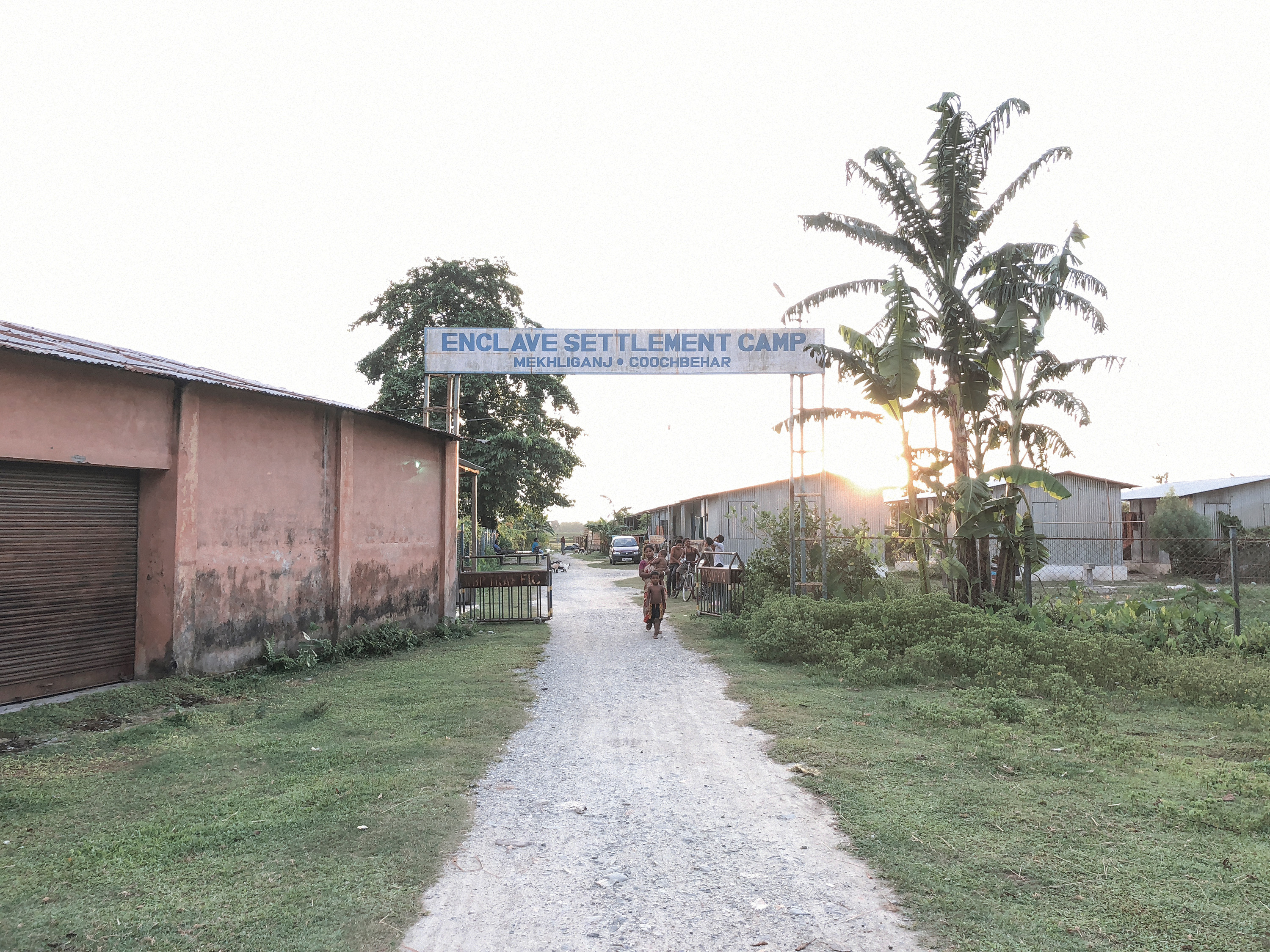
The exclaves exchanged were mostly found along the northernmost part of Bangladesh and along a narrow arm of Eastern India in West Bengal, itself sandwiched between Nepal, Bhutan, and Bangladesh. Twenty-one counter-exclaves existed within these exclaves, and were likewise redesignated in the swap, as was the world’s only counter-counter exclave, Dahala Khagrabari, a smidgeon of Indian farmland fewer than two acres in size owned by a Bangladeshi jute farmer. This odd patch of Indian territory was itself surrounded by a Bangladeshi village, which was encircled by an Indian village, which was surrounded by a district within Bangladesh proper. But this wasn’t the smallest of the chhitmahals—the exclave earning that distinction consisted of little more than a hundredth of an acre (less than 500 square feet).
The popular origin story for these absurd bits of territory has the Maharaja of Cooch Behar and the Foujdar of Rangpur putting up as bets in chess games small chits of their territories. Over the years, the modern nations that exist today grew up around their wins and losses. Whenever the two men played, they’d put up a village as one of their stakes. Out of their gambling emerged a patchwork of territories, enveloped within one another like Russian nesting dolls.
Alas, this story has turned out to be the historical equivalent of fake news. The chhitmahals actually came about as the result of a peace treaty in 1713 between the kingdom of Cooch Behar and the declining Mughal Empire, whereby Cooch Behar ceded some of its districts to the Mughals. These lands were not necessarily contiguous or compact, and there were small pockets of territory embedded within the traded districts. Before the advent of modern nations, passports, and tightly regulated borders, such messy alliances and sub-alliances had little impact on people’s daily lives. When British India absorbed both kingdoms, the exclaves mattered even less. Only when Britain moved out of the neighborhood, and Pakistan and India were created, did they become a problem.
A rabbit hole of explanations would be required to illuminate the intricate thread of land disputes that occurred in the region in between the hasty and bloody Partition of India and Pakistan in 1947 and the political conditions that finally made the swap of the exclaves possible in 2015. But let’s give it a try: First, a lawyer who had never set foot in India, Cyril John Radcliffe, was given the task of drawing a border between India and Pakistan in five weeks’ time. He inadvertently omitted from the map a police station that should have belonged to India. But its omission from both his map and written report allowed Pakistan a claim. The trouble caused by this one police station wasn’t even partially resolved until the 1958 signing of the Nehru-Noon Agreement between the two countries, which was then, predictably, tied up in courts until 1971, but then war broke out and East Pakistan was transformed in the conflict into the independent country of Bangladesh. Another land boundary agreement was reached in 1974 between India and Bangladesh that addressed additional “adverse possessions,” including the exclaves, which, the two nations agreed, ought to be exchanged. Politics, both local and national, made the agreement’s implementation difficult. To some Indian nationalists, Bangladesh was getting the better deal: 17,160.63 acres would be ceded to Bangladesh versus 7,110.02 acres to India. Bangladesh ratified the agreement in 1974, but it took India another 41 years to approve the swap, largely because of domestic opposition. In 2011, a new protocol was reached resolving the outstanding border issues, but still no time frame was established for implementation. The inertia over the matter was finally overcome when Narendra Modi became prime minister in 2014, and his party introduced a constitutional amendment to force the issue and to resolve the dispute once and for all. Only a nationalist party such as Modi’s could have possessed the political capital to thwart the nationalists who opposed the settlement of this issue, it seems.
When I visited the Mekhliganj resettlement camp, one of three such camps set up for the Indian refugees from Bangladesh, in January of 2016, I wondered why, out of 38,000 people, only 987 had chosen to uproot their lives in order to retain the Indian citizenship that had been their fragile birthright in the chhitmahals. Their ancestors had been loaded onto this particular runaway train during the British Raj, survived the upheavals of Partition, the bloody births of East Pakistan and Bangladesh, and now, finally, here they were, waiting in a resettlement camp after being told they could obtain all of the rights and privileges of Indian citizenship in exchange for leaving the only land they had ever known. Mind the gap.

After checking out my credentials, the mustachioed policeman led Aparna and me among the barracks. He had only worked at the camp for a few days, but he thought the refugees were “happy here.” A young civic volunteer, Ersad Ali, who had been at the camp for a month, said that, when the refugees first arrived, they were traumatized and barely talked. Now they had bonded, but there were obviously many problems for them in their new, temporary home. A plastic stool was brought for me, and a hundred men and women crowded around to share their stories.
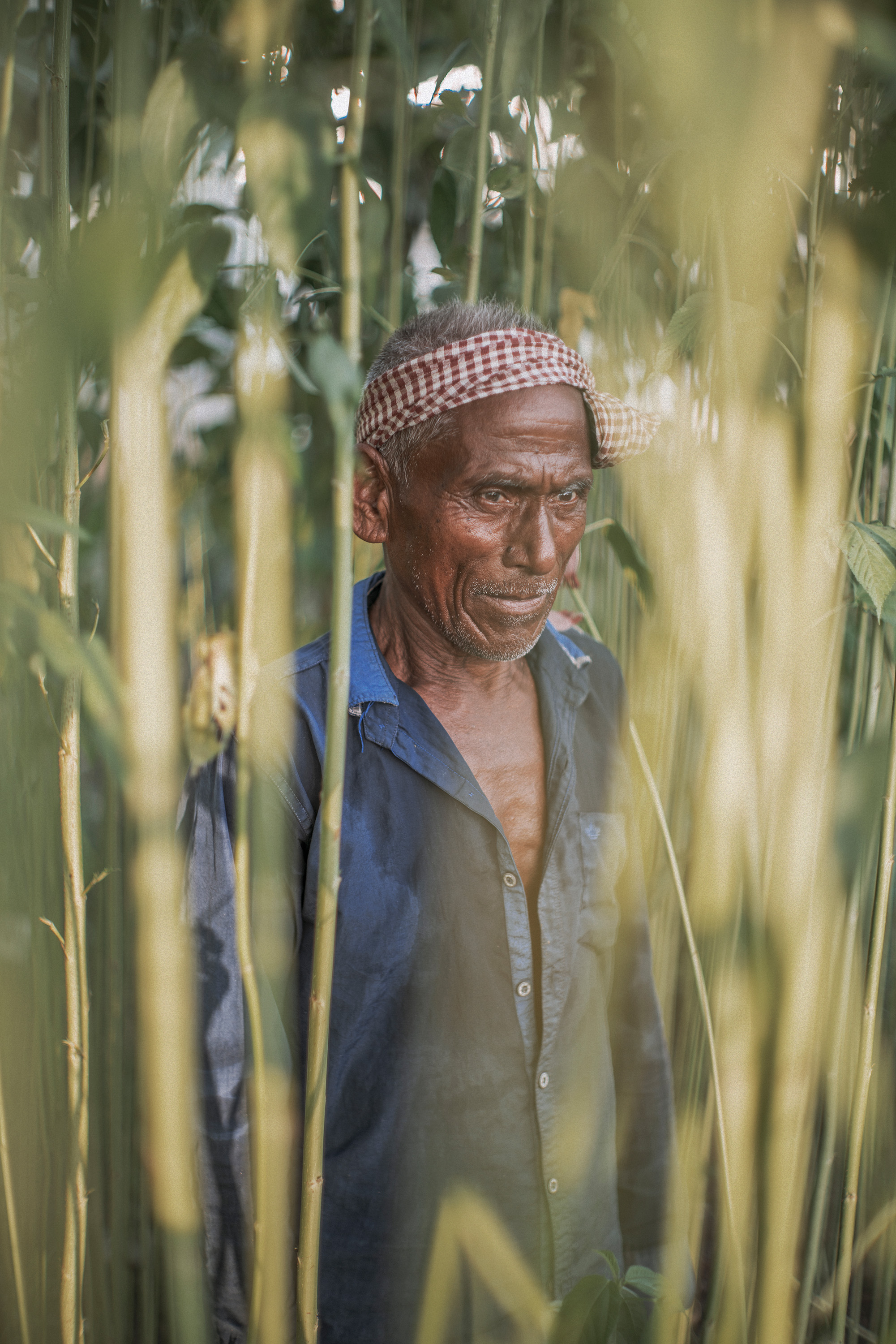
I asked why they had wanted to move. “We love India,” 18-year-old Ranajit Roy said. They’d been here since November, and while not everything happened fast enough, they were slowly being integrated into Indian society—Ranajit had been attending an Indian school for the past three days.
I took “We love India” to mean something else, as I wasn’t sure I believed in love for a place they had only known in name. Their neighbors in Bangladesh had certainly not loved them, as made clear by the range of atrocities committed against them over the years in the chhitmahals. A woman in a purple sari, 50-year-old Swapnarani Roy, told of being “ill-treated and rudely tortured,” people in the exclave beaten up, houses broken into and burned, Hindus forced to eat beef “to convert them,” her husband threatened with murder. “They tried to molest her 13-year-old daughter,” Aparna told me. Her husband had escaped the exclave with only his life. Lifting up her sari, she displayed scars she said were the result of a machete attack.
Sixty-four-year-old Nagendra Barman told of being beaten, his house burned. There were no basic facilities, no law and order. He and others told of “waves of violence” from the beginning, meaning, I assumed, from Independence, though he was not quite old enough to have lived through that.
When asked whether there were others left behind in the exclaves who would like to follow, a man shouted out and others grew agitated. A woman in her thirties with her arms crossed, Pratima Rani Barman, said more than 2,000 people would come if they were allowed. “There are many places the government didn’t go to talk to the residents,” she said. The Indian press had reported much the same, one article claiming that the exclave dwellers in Bangladesh had been threatened and told they shouldn’t go to India, the Bangladeshi officials afraid of a “mass exodus” that would represent an enormous “loss of face.” While the Indian government has claimed that most residents didn’t want to move, the Indian press reported something quite different: Upward of 13,000 exclave inhabitants in Bangladesh had been expected to move to India after the swap, yet only 2.6 percent of the approximately 38,000 Indian exclave inhabitants chose (or were allowed) to do so in the end. A Times of India blogger reported in 2015 that many of the exclave dwellers had been overlooked in the 2011 government survey, and that the group Jamaat-e-Islami had “threatened and intimidated” those who wanted to opt for Indian citizenship. “In stark contrast,” the blogger asserted, “all of the 14,854 people staying on Indian soil in Bangladeshi enclaves have sought Indian citizenship.” At least 2,000 residents stranded in the chhitmahals of India, now Bangladesh, had applied for Indian citizenship after the deadline.
These complaints, while difficult to prove, afford a plausible reason why so few had chosen to move from Bangladesh to India. If life was as hard as they claimed in the chhitmahals—robbed and beaten, their houses set alight, their daughters molested—then were those left behind loyal, finally, to the land on which they were born and raised, willing to endure hardships to stay with the familiar? Now that they were officially Bangladeshi instead of Indian, and the exclaves in which they had previously lived mooted, would their neighbors treat them any differently?
Due to visa restrictions, I was unable to visit the other side of the border, but I did spend time in all three Indian resettlement camps and heard similar stories of mistreatment in each of them. The big revelation (for me) was that not all the refugees from Bangladesh were Hindu. Out of 55 families in the Dinhata resettlement camp, 30 were Muslim. So it wasn’t a simple matter of Hindu versus Muslim. The residents of the chhitmahals had been made to feel inferior to their neighbors by dint of where they lived and how they identified nationally. The hatred exhibited toward them was as arbitrary, as such hatreds almost always are, just more obviously so. Their resettlement had nothing to do with religion, they said.
Mijanor Rahman, a Muslim man in his thirties, said that the authorities tried to discourage them from leaving Bangladesh, claiming they would be forced to change their faith upon arriving in India. But after two months at the camp, he said he felt no threat.
Certainly, some settlers were migrating to India for economic reasons, but many of them claimed to own land in Bangladesh, for which they had ancient deeds dating back to the days of the Raj. Another man in his thirties, Mrinal Barman, said it was difficult to sell their land. They had buyers, but the stamps from the authorities needed to finalize the sale were not forthcoming, as the deeds shuttled from one government office to the next. He couldn’t collect money from the buyers either. This particular frustration was widespread among those in the resettlement camps, as they were not allowed to travel back to Bangladesh to complete their sales, though some held out hope that at some point they’d be able to return for this purpose.
“The people knew we were leaving,” Rahman said. “They’d get the land eventually.”

A 30-minute drive from the Mekhliganj resettlement camp, Dhabalsati Mirgipur, a tiny village of split bamboo and tin roofs, looked no different from the rest of the Indian countryside. Before the exchange of territories, it was officially part of Bangladesh. Electric poles had been erected by the government not long after the swap, I was told, as Aparna and I sat in a small shelter that had also recently been erected. A road bisected the community. On the far side, three banana trees in a field had marked the former border between India and Bangladesh. Behind the shelter, a wide, dirt path led into the heart of the village, tobacco fields on one side and huts crowding the other side. There was no actual border visible to anyone here besides locals, who knew that one hut was part of the former Bangladesh enclave and the one farther down the path had always been Indian. Thirty-eight families lived in this former exclave, and it seemed that about half of the men in the village, most dressed in sweater vests and sandals, had crowded around us.
A man named Bipul Chaudhury, in his forties, said that, while they had previously been officially Bangladeshi, they had no citizenship papers, so they used to illegally acquire Indian papers. Gautam Adhikary, in his late twenties, had been able to study in India but had required forged documents to do so. Most of the village had lacked basic services. A few lucky ones, like Gautam, who lived near the road, had been able to hook up connections illegally. As a small community, they tended to sort out their differences among themselves. They developed “understandings.” Their village elders took the role of arbiters, though sometimes they asked the head of the Indian village next door to arbitrate. They sometimes had difficulty voting because it was well-known locally that they were Bangladeshis. How did they identify? As Indian, Gautam said. “If we can study in Indian schools, run on Indian roads, why should we consider ourselves anything else?”
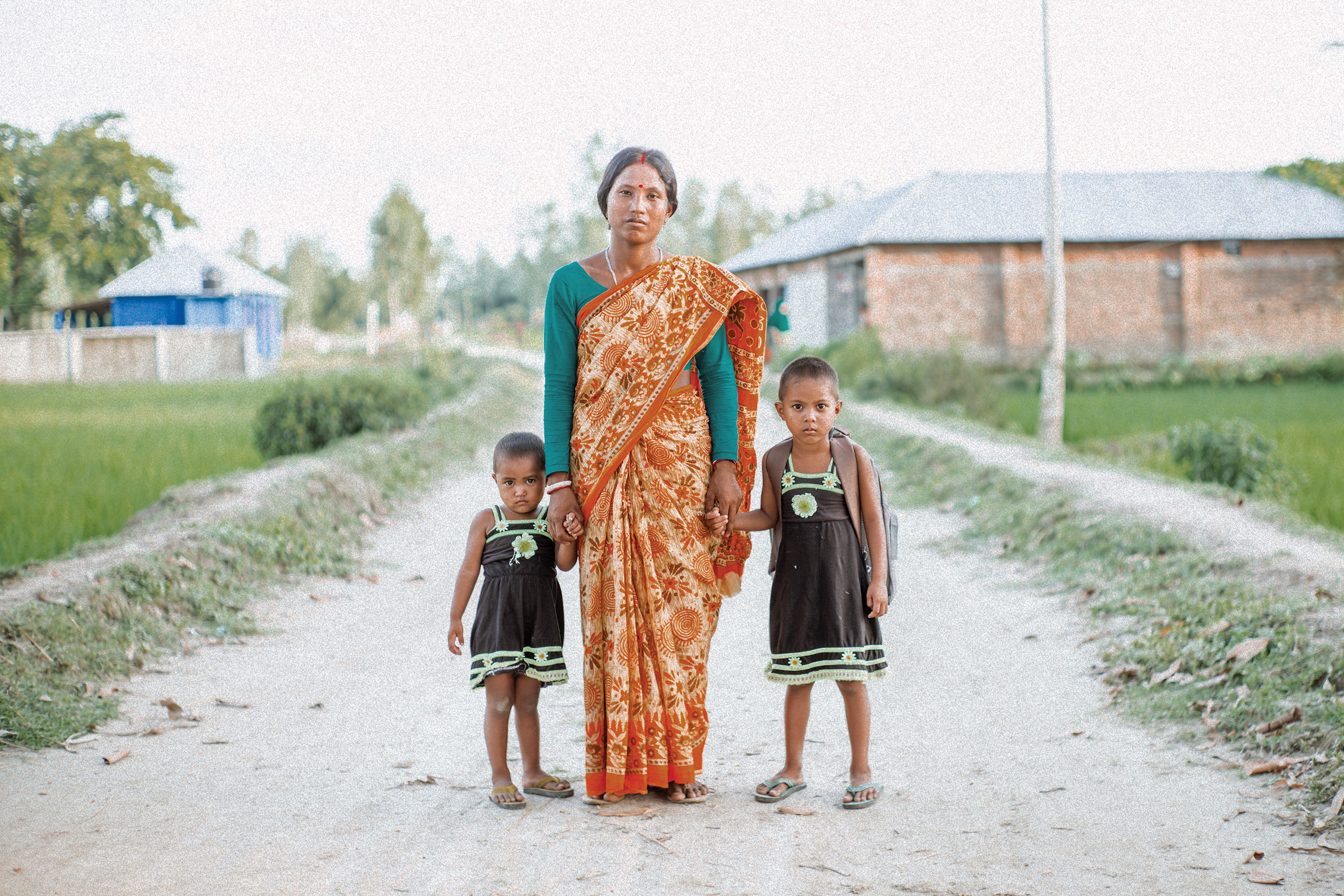
In Balapukhari, another former exclave, we were told much the same story. A man wearing a T-shirt with names of world cities and a gray skirt-like lungi, Poritosh Roy, said that his family had lived there for generations. When I asked him if he ever considered himself Bangladeshi, his response was a quick and violent, “Nah.” The main problems here, he said, were land transactions, as there was no legal documentation. Land titles were ancient, informally arranged among enclave residents, or nonexistent. To create legal documents would have taken years, as he would have had no way to reach Bangladesh to file them. So the people of Balapukhari had made these transactions ad hoc within the community. While a young woman, a university student, tried to figure out how many generations her family had lived in the former enclave, a man on a bicycle stopped upon seeing the crowd and proclaimed his pride to be Indian. “A lot of people have passed away who would have wished for this day,” he said.

The land boundary agreement of 2011 concerned not only the exclaves but other adverse possessions, including that pesky police station in South Berubari that Cyril John Radcliffe had inadvertently omitted from his report. The two countries had created a de facto solution to that situation after the 1974 agreement, which the more comprehensive 2011 agreement formalized. India was allowed to keep the Berubari district intact, police station and all, in exchange for a corridor connecting the rest of Bangladesh to its relatively wealthy and large exclave of Dahagram-Angarpota. The narrow land bridge of 178 by 85 meters, known as the Tin Bigha Corridor, has the feel of a heavily fortified municipal park, replete with commemorative plantings and plaques proclaiming Indian-Bangladesh friendship and guards of both nations posted at the gates. When I visited, a turbaned Punjabi guard was stationed at one end and a Bangladeshi guard at the other. A Bengali friend of mine suggested that the border around the corridor, with its 15-foot-high fences, was like North and South Korea, while other parts of the border were like the Netherlands.
Historically, the India-Bangladesh border around Cooch Behar has been relatively porous, with foot traffic moving more or less unimpeded, as I found out after stepping over the border for a quick photo-op a few kilometers away from Tin Bigha. A local farmer nearly photobombed me as he traipsed from the Indian roadside into a Bangladeshi potato field, the border marked only by a stone pillar the size of a torpedo with INDIA on one side and BANGLA on the other.
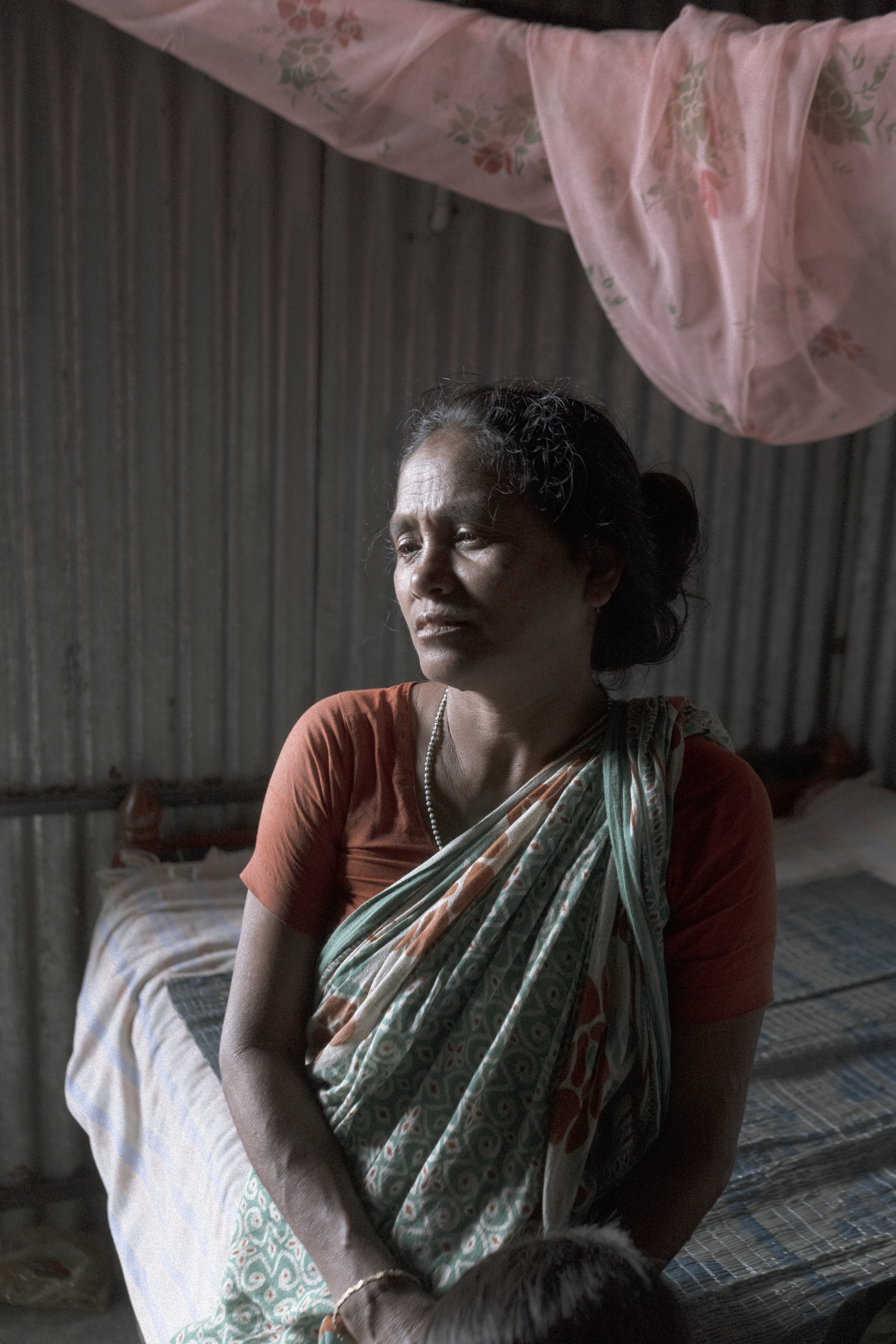
As Aparna and I traveled on to Berubari, the land bore no obvious scars of its contentious past. The only inconveniences we faced were the occasional dog or goat crossing the road in front of us, dealt with efficiently by our driver with a quick blast of the horn. A salesman on a bike with a bundle of tin cooking utensils set a dreamy pace for us past overarching banyan trees, conical hills of hay, and the occasional tea garden, the road wide enough for only one car. A blue high school building with whitewashed trees set against drab concrete blocks was the only structure of consequence besides a humble mosque, and then virtually nothing but fields fringed with trees, a landscape that looked anything but adverse. A tent of red, yellow, and blue sat alone in a field, and Aparna informed me that the past few days had been auspicious for weddings.
In 1971, this quiet country lane would probably have been clogged with tanks, infantry, refugees, and destruction everywhere. No wedding tents. Or peddlers pedaling their bikes. A nearby Hindu temple, Tristrota Shakti Peeth, destroyed in the fighting, was later rebuilt. Aparna’s own family had moved to India when their land in what was then East Pakistan was confiscated.
At a makeshift store on the side of the road, we met a man in his fifties, Gokul Mohanta, who told us that he’d always lived in South Berubari, even when it was Bangladesh. Though it officially became India on August 1st, 2015, the area had been Indian in every way except on the map since 1971—the residents even had Indian voter ID cards, he told us.
But now that the swap was official, the Indian government was wasting no time: Along the Berubari border, 10 major pillars and 110 subsidiary pillars were being installed. At that time, the idea wasn’t necessarily to construct a barricade, but only to demarcate the line before anyone changed their mind. As if on cue, Biswojit Das, a local resident and engineer working on installing pillars for the new border, pulled up on his motorcycle and joined our conversation. He invited Aparna and me to follow him to his worksite. Carrying a border post, he set a lively pace as we traipsed along a bamboo-lined dirt path raised above a mustard field, a cluster of huts, an old man burning straw, and a cow tied near the path that eyed us warily as we passed. “There,” he said, pointing to a copse of trees a cricket pitch’s distance ahead. The tea garden near the trees was Indian, while Bangladesh was on the other side. This was a resting place for the Border Security Force, he told me. I was headed off in that direction when, from the corner of my eye, I caught sight of an Indian soldier with a gun striding toward me at a brisk pace.
The man asked me to follow him across a field toward a group of men setting pillars. I was then led by two armed men toward seven or eight other armed men. A short distance away was a group of brown-uniformed Bangladesh border guards eyeing me with what seemed a menacing curiosity. A man in a black leather jacket and aviator glasses approached me and introduced himself as Kaushik from the Survey of India. He seemed more concerned that I had never heard of the Survey of India than with my trespass on a sensitive border, so I feigned an intense interest in the venerable organization, from its founding in 1767 to its distinction of having designed the first postage stamp in India in 1854, as if my freedom depended on it, which perhaps it did. We posed for a photo together, facing away from the border, which he then invited me to step over. The Bangladesh security forces, meanwhile, hadn’t taken their eyes off me, and I imagined all sorts of scenarios.
“Don’t worry, sir,” he said. “If they wanted to shoot you, you would be dead already.”
White privilege and my obvious foreignness had most likely spared me, but more than 900 Bangladeshis had been shot by India’s Border Security Force between 2001 and 2010, according to a Human Rights Watch report. Returning from India to her father’s birth village in Bangladesh in 2011, 15-year-old Felani Khatun screamed out when her clothing became entangled in a barbed wire fence. Indian Border Security soldiers opened fire on her and her father, killing her. Photos of her body dangling upside down from the border fence, where the Border Security Force left her for a day, shocked the region and invited worldwide condemnation.
Crossing the border where I had would probably be quite difficult now, even for a white guy like me. By March of 2017, 50 percent of the Bangladesh-India border had been fenced, with a goal of completion by 2019. In West Bengal, where much of the border is riverine, the Indian government is investing in high-tech surveillance as well as old-fashioned barbed wire.

Governments are necessary, and it’s natural to want to consider oneself a part of something larger. But I’ve never been fully convinced that nations as such make sense, and the story of the exclaves seemed to me the most extreme example of the arbitrariness of borders. And yet the people of the chhitmahals, who were essentially stateless and without rights prior to the land swap, are undoubtedly better off in some important regards. In the resettlement camps, the former residents of the Indian exclaves were given Indian ID cards, as well as a job card that entitled them to a hundred days of manual work, such as digging ditches—per family, though they had been under the impression the cards were per person. The tin shelters, they complained, were too hot or too cold. These were issues they hadn’t anticipated, Mijanor Rahman told me. “Even so, this is 1 percent of what we suffered [in Bangladesh],” he said. Still, the complaints were nearly universal.
Another Muslim man in his thirties, Osman Gani, who sold medicine in Bangladesh, said that the rations provided by the Indian government were not enough—the same rations were doled out to a family of five and a family of two. Rations meant for a month ran out in 10 days, and he didn’t know where his family’s next meal was coming from.
Two years on, the bloom of Indian citizenship had faded for many, as virtually all of the refugees still remained in the temporary camps. With their land unsold in Bangladesh, they had little money at hand, nowhere to go, and few ways to earn money. In August of 2017, an Indian newspaper story about the Dinhata resettlement camp quoted Osman Gani as being completely disillusioned and wanting to return to Bangladesh.
The slippery nature of land ownership, internationally and privately, has continued to haunt residents of both the Indian and Bangladeshi chhitmahals long after the exchange. New infrastructure projects by the Indian government have wreaked havoc in the eyes of some residents of the former exclaves. The Indian press reported not long after my visit that roads were being planned that ran through houses, and that police stations and post offices were being set up on private property. The former enclave residents were receiving a crash course on the realities of citizenship: Governments solve some problems and create new ones. As it turned out for the former residents of the chhitmahals, citizenship as a concept made sense, but once the larger deal was struck between states, they had been left in a kind of limbo, stranded between wishful thinking and the realities of global and local politics.

India




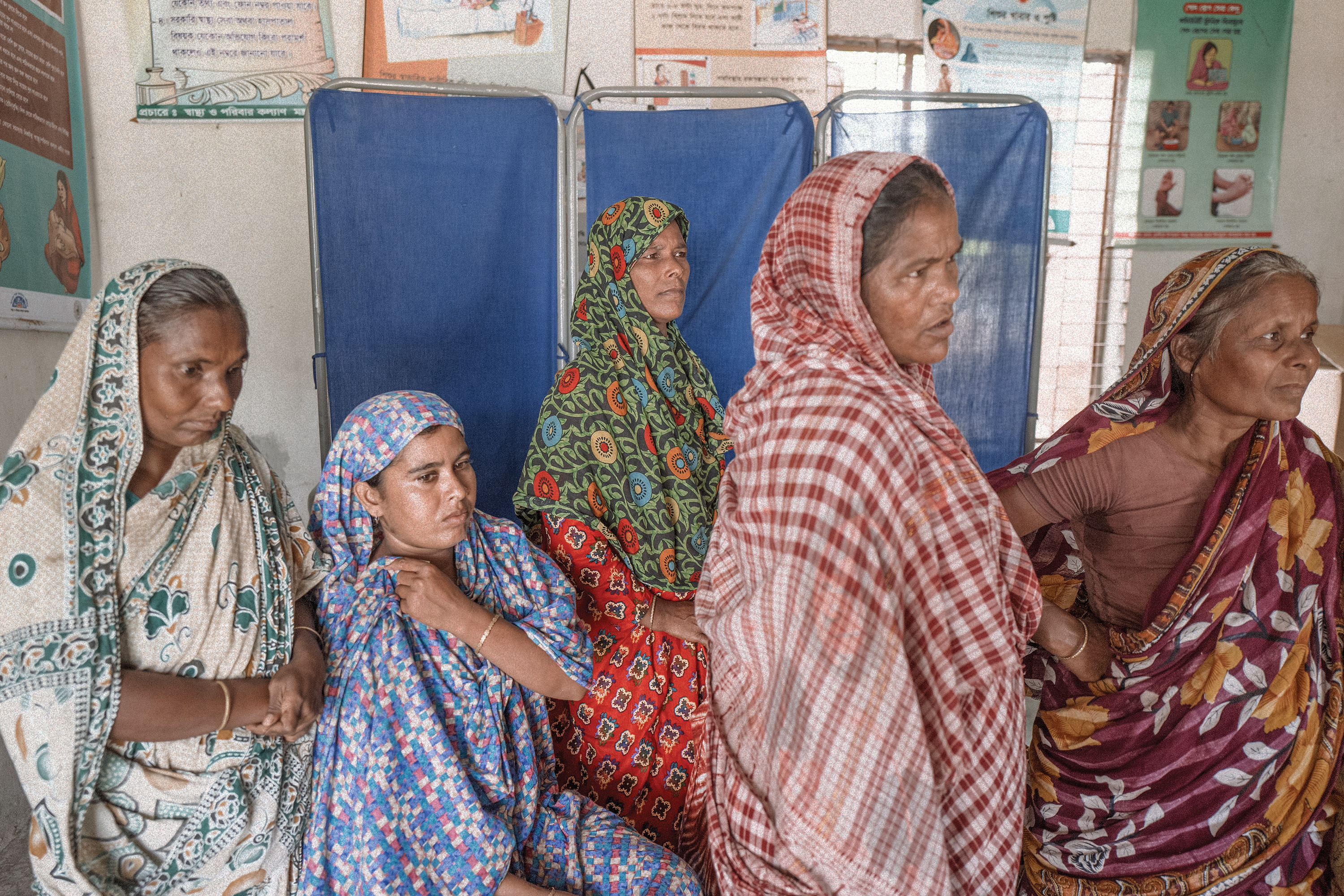
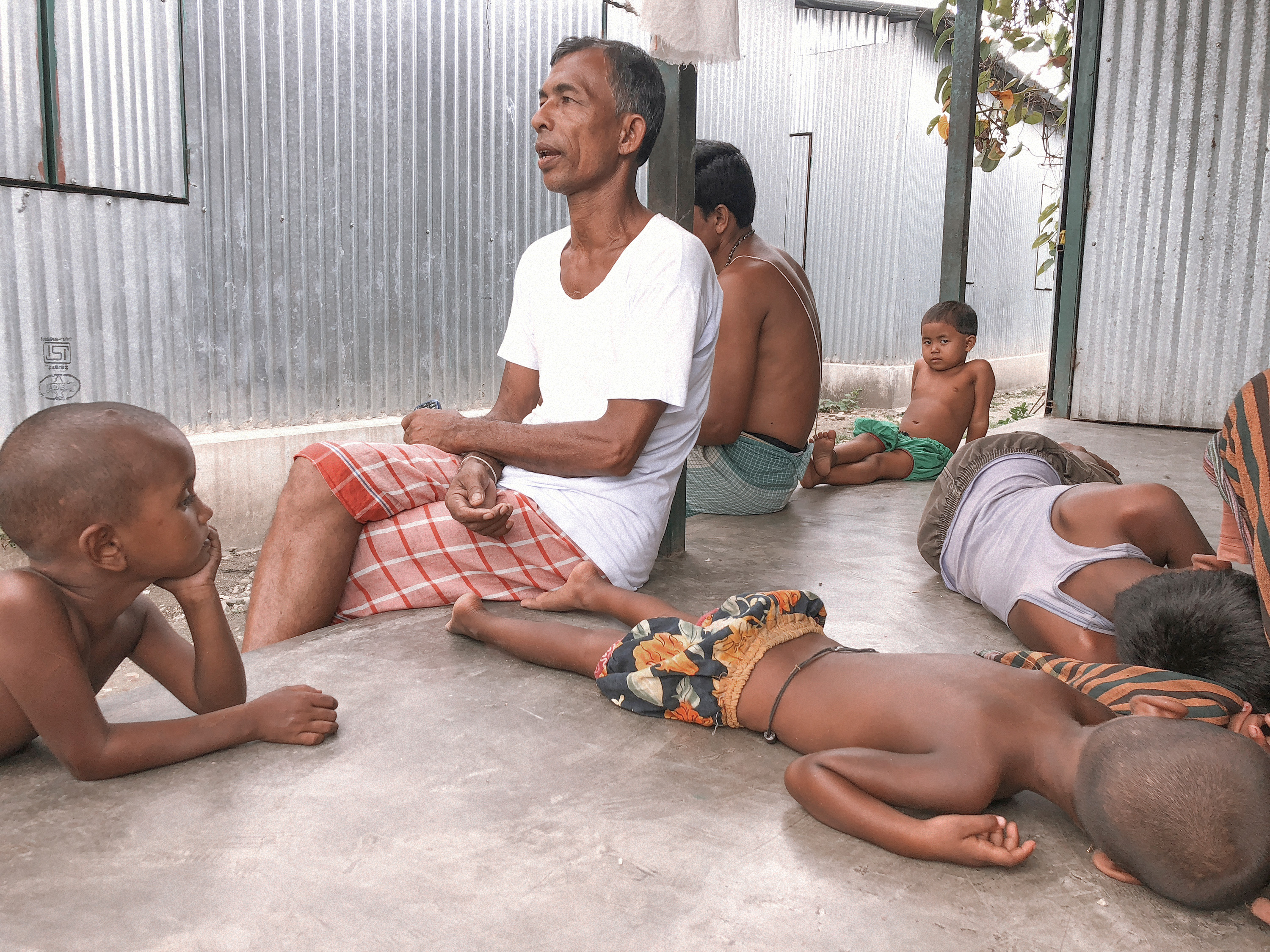
(Photo: Ismail Ferdous)



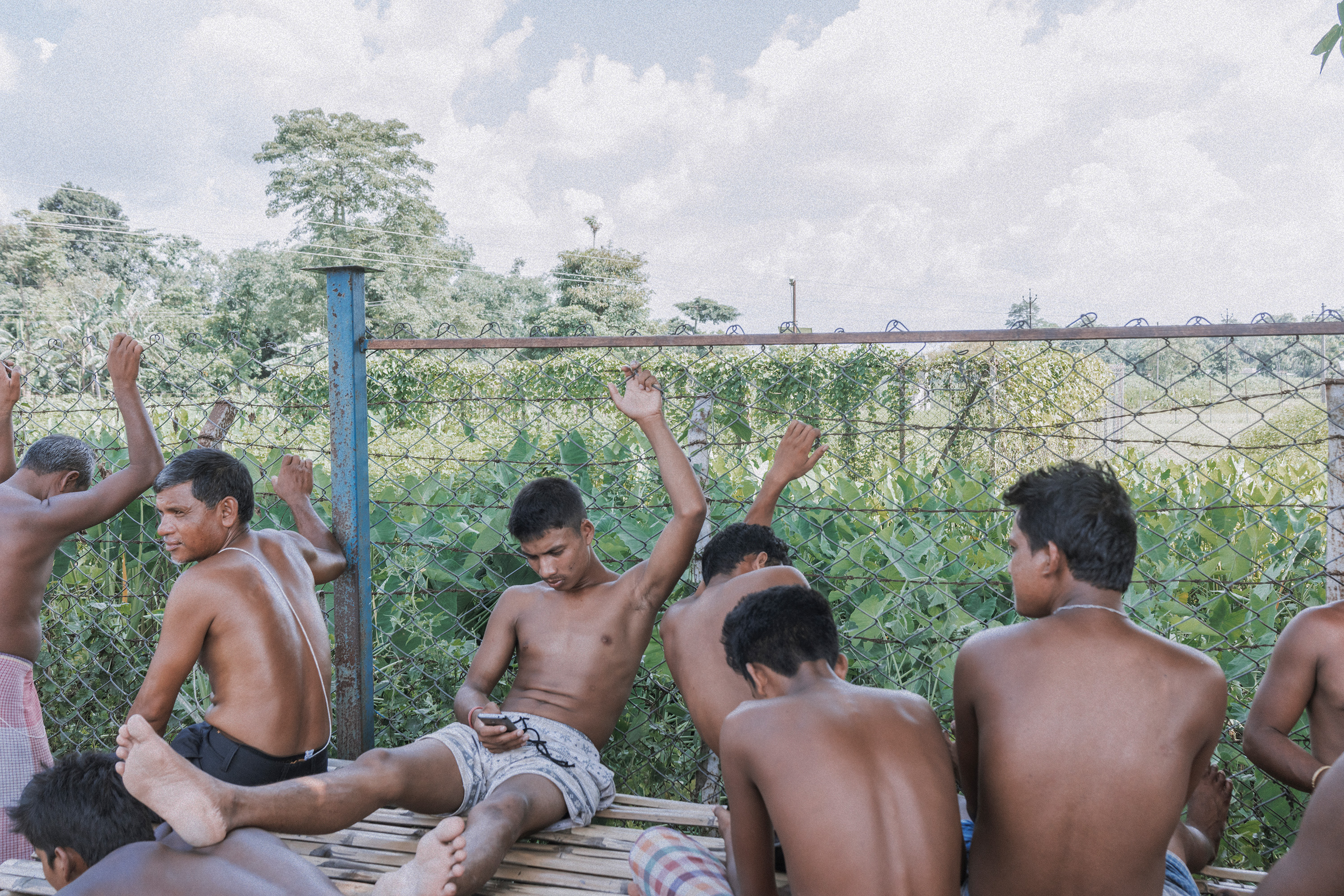











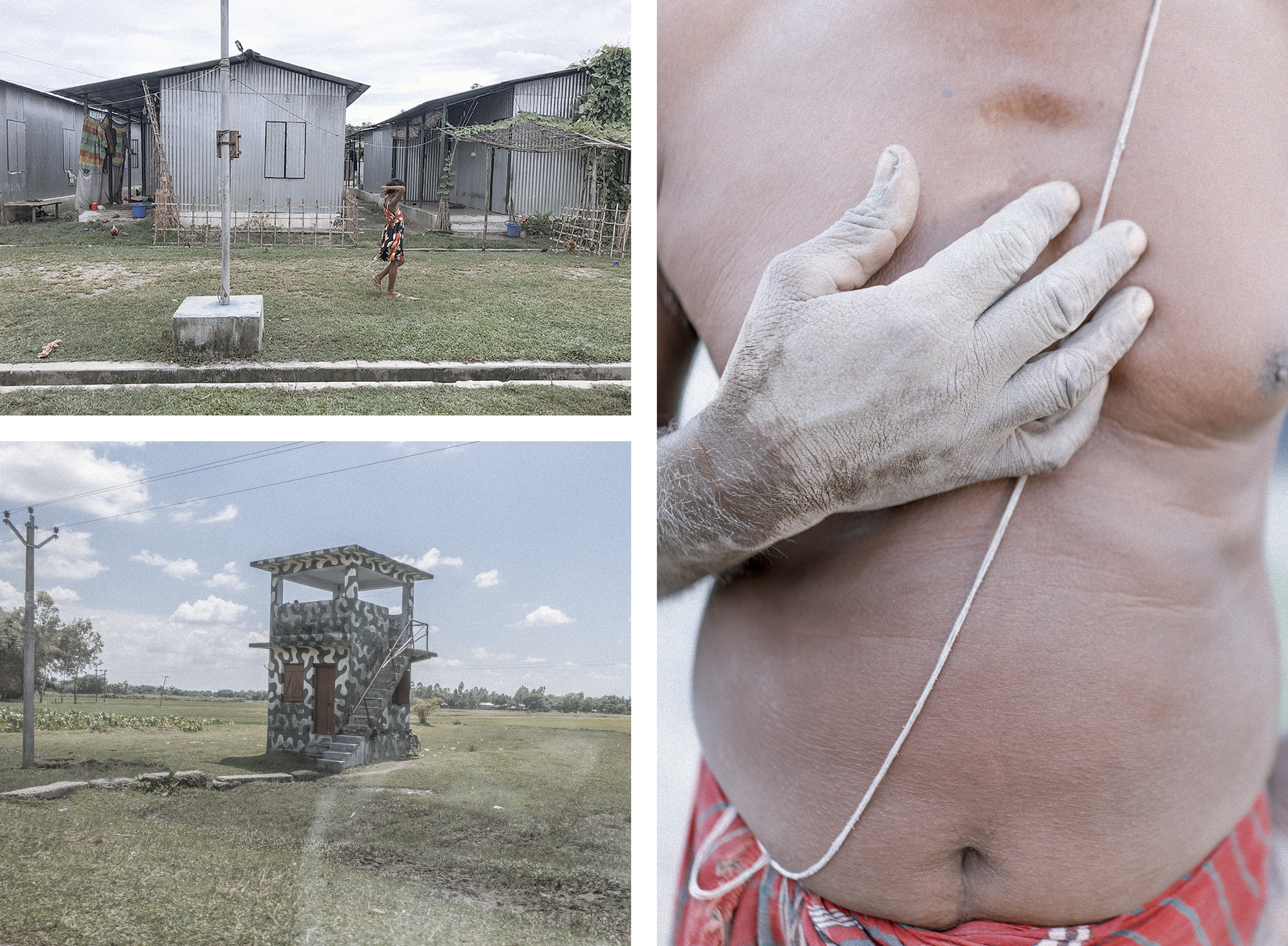

(Photo: Ismail Ferdous)



Bangladesh

(Photo: Ismail Ferdous)
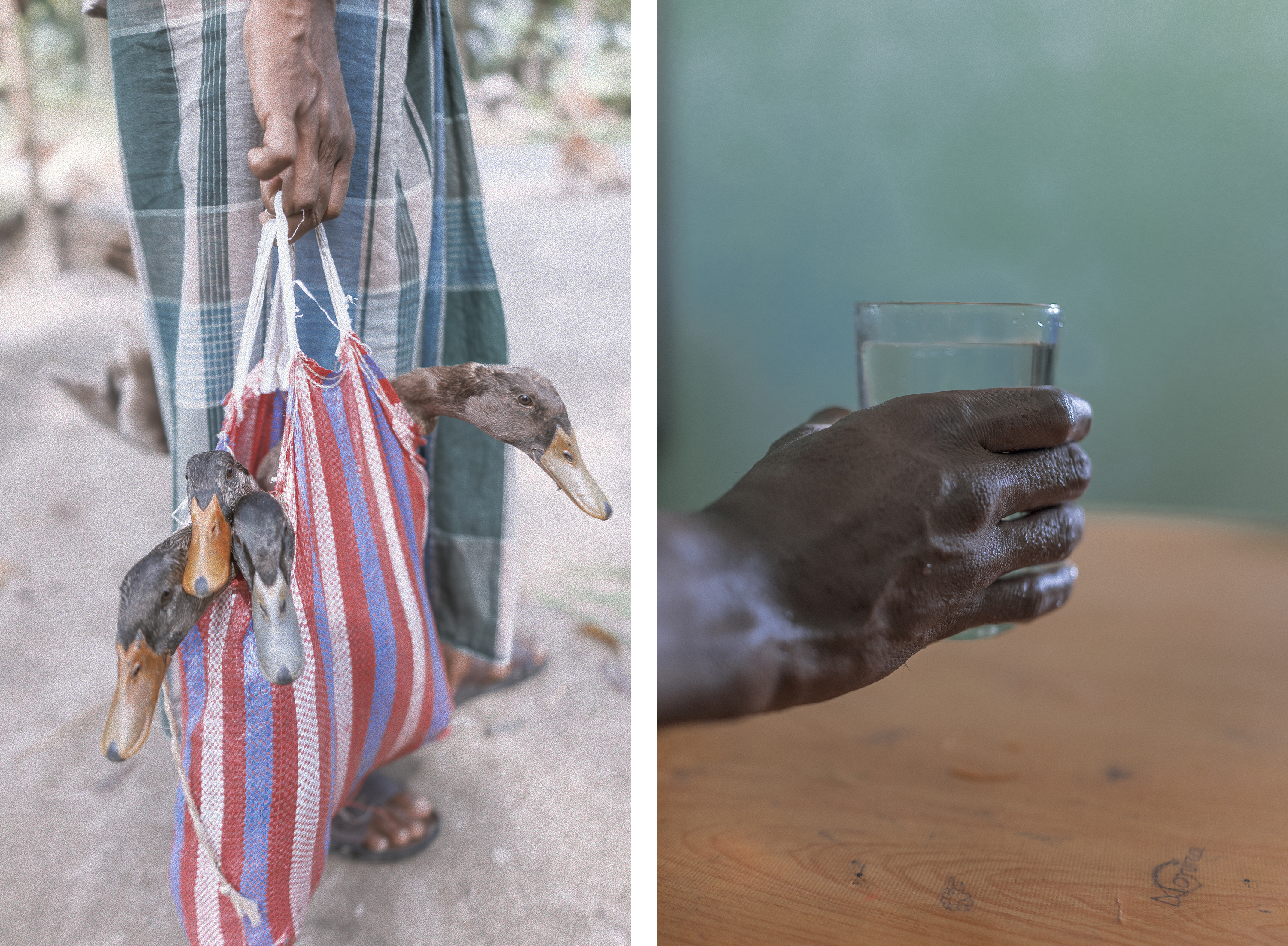









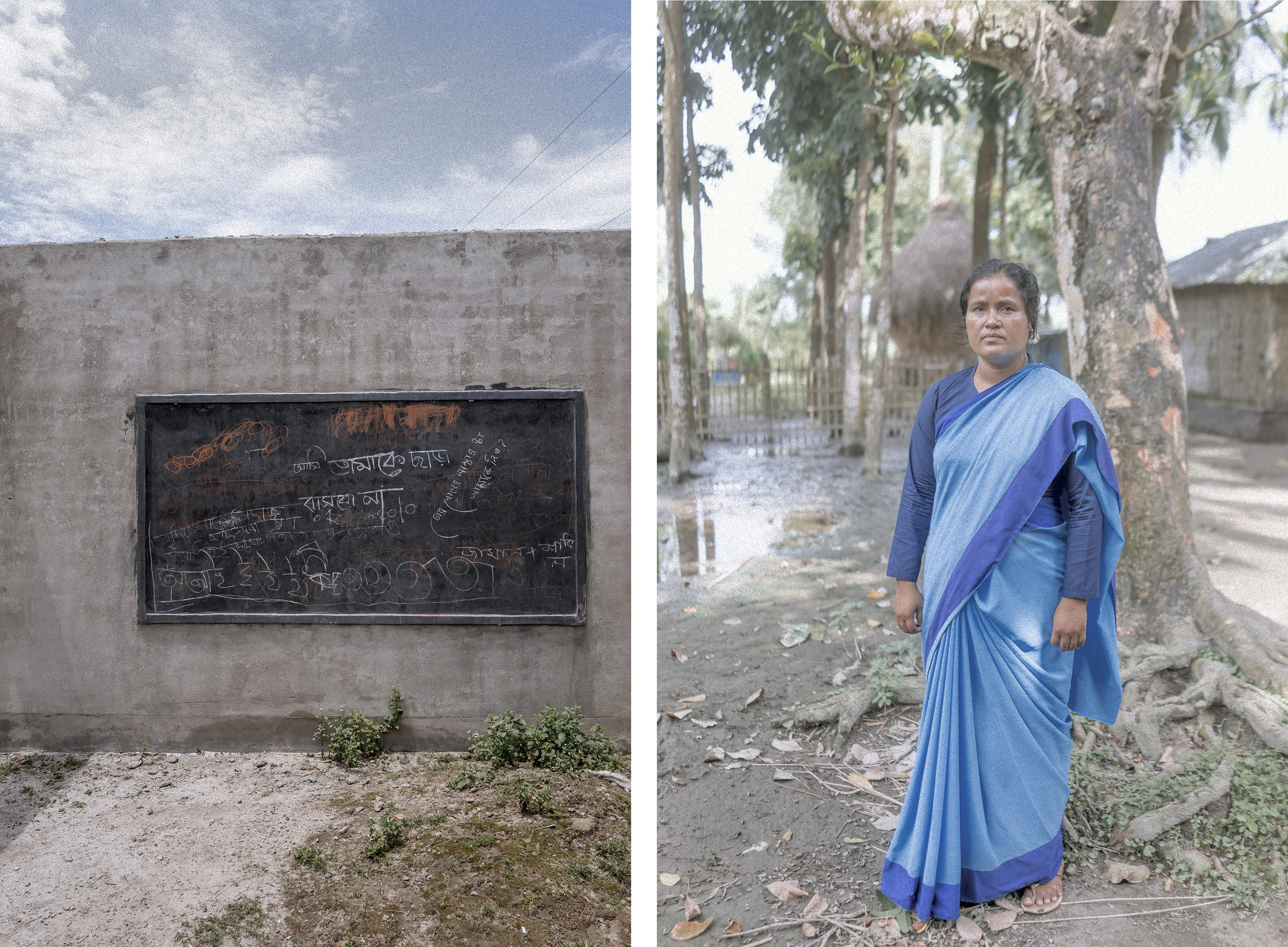

(Photo: Ismail Ferdous)
